Last month, Art History faculty and graduate students accompanied Steph Roy of Northern Survey Supply to St. Mary's Cathedral here in Kingston. Mr. Roy demonstrated the use of Leica scanners to map the interior of the cathedral. This technology is typically used in mining and industrial applications.
Leica scanning technology represents one vital future path for art and architectural history. By generating millions of points of laser measurement and photography, we can now generate completely accurate models of buildings and landscapes that allow us to study them at an intimate level and to chart their changes over time. Professors Reeve and Vorano are working on a project to employ this technology in three settings: the historical architecture of Kingston, ON; St Davids Cathedral in Pembrokeshire (Wales); and Inuksuk Point (Baffin Island).
Art history M.A. candidates Abby Berry and Eleanor Mackie were in attendance, as their research ties in with the technology. Ms. Berry's research focuses on technical art history and Ms. Mackie's research focuses on medieval architecture and the use of space. Being exposed to cutting edge technology helps to prepare our students for a variety of careers.
Thanks to Northern Survey Supply for your fascinating demonstration!
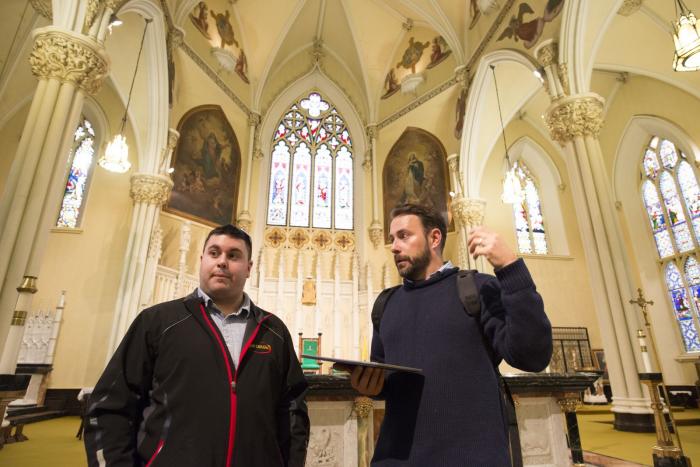
Prof. Matthew Reeve, of Queen's Art History, and Steph Roy, of Northern Survey Supply.
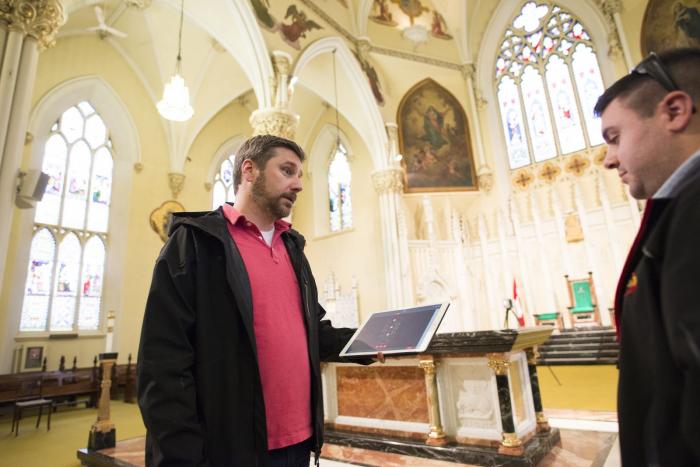
Prof. Norman Vorano, of Queen's Art History
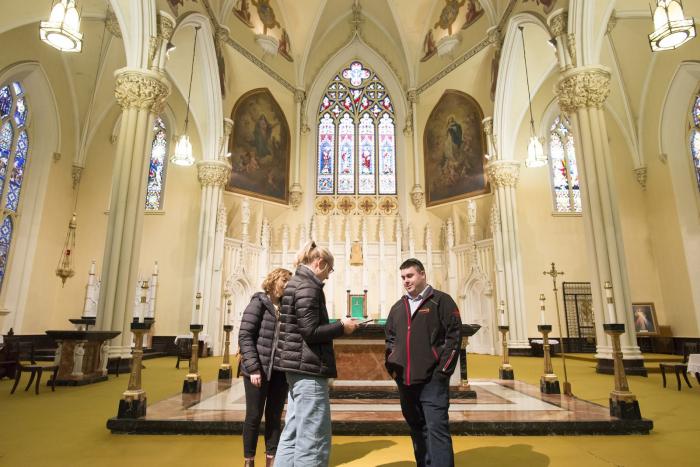
Graduate students Abby Berry and Eleanor Mackie, with Mr. Roy
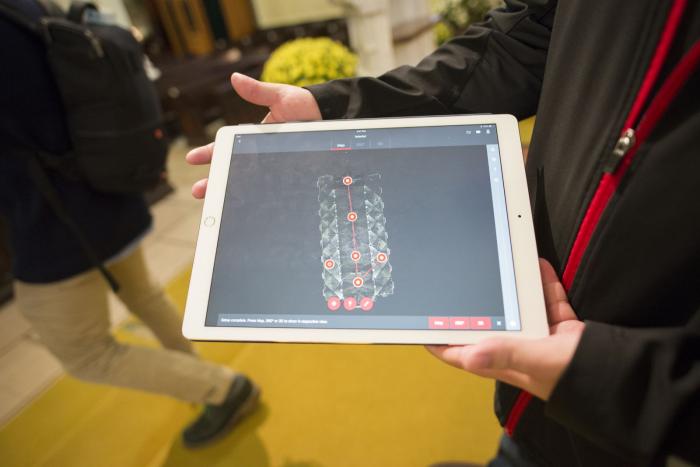
Part of the resulting scan, displayed on a tablet.
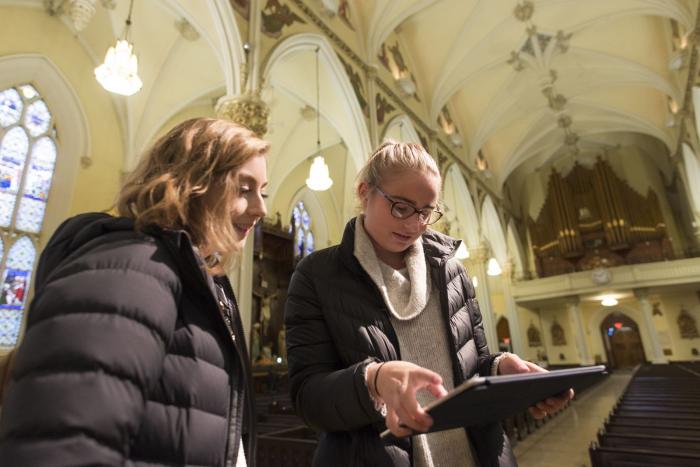
Graduate students Abby Berry and Eleanor Mackie learning to use the scanning interface


